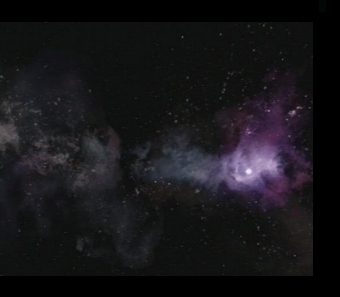
A Class-B itinerant pulsar is a classification of pulsar
used by Starfleet. The USS Voyager passed an itinerant class B pulsar
with a rotation cycle that peaked for seventeen hours every 32 days, in
the Delta Quadrant in late 2376. Pathfinder Project used the
opportunity to use the MIDAS array to amplify the signal of a
communication through the pulsar so it could reach Voyager some 30,000
light years away, in the form of a compressed data stream. This allowed
for them to send each other quick bursts of information (such as
letters and tactical updates) every 32 days, giving Voyager seventeen
hours to respond. (VOY: "Life Line")
Pulsars are highly magnetized rotating neutron stars
that emit a beam of electromagnetic radiation in the form of radio
waves. While there is no such term as 'itinerant pulsar' in
astyrophysics, there is a class of pulsar called rotation-powered
pulsar, where the loss of rotational energy of the star powers the
radiation. Rotation-powered pulsar is one of the major classes of
pulsars. A Rotation-powered pulsar is a rapidly rotating neutron star,
whose electromagnetic radiation is observed in regularly spaced
intervals, or pulses. It differs from other types of pulsars in that
the source of power for the production of radiation is the loss of
rotational energy (as opposed to other pulsars that derive their energy
from the gravitational potential energy of accreted matter or the decay
of an extremely strong magnetic field).
The actual observed periods of pulsars range from 1.4 ms
to 8.5 s. The radiation can only be observed when the beam of emission
is pointing towards the Earth. This is called the lighthouse effect and
gives rise to the pulsed nature that gives pulsars their name. Because
neutron stars are very dense objects, the rotation period and thus the
interval between observed pulses are very regular. For some pulsars,
the regularity of pulsation is as precise as an atomic clock.
|
